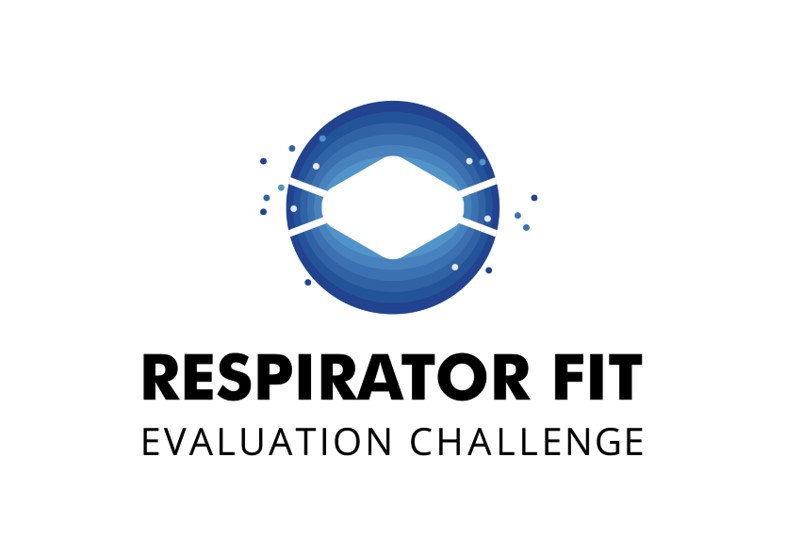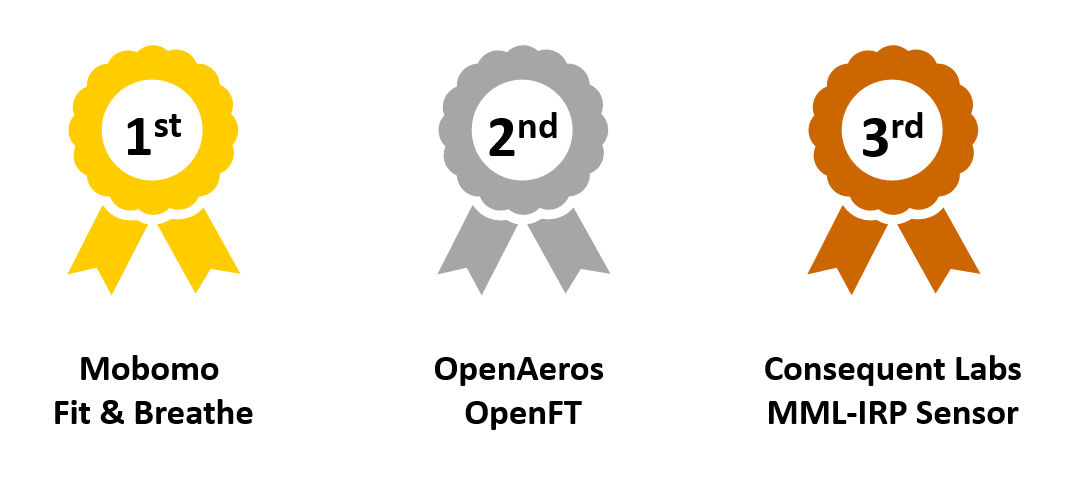The NIOSH Respirator Fit Evaluation Challenge
Posted on by
Millions of workers across the United States rely on tight-fitting respirators to keep them safe on the job. These workers have a wide variability in facial features and dimensions, making it challenging to identify specific respirator models and sizes that will provide a proper fit. If a respirator does not properly fit, forming a tight seal against the wearer’s face, then it may not provide the expected level of protection. Innovative solutions that let a respirator wearer know when the respirator’s fit has been compromised are lacking. To foster the development of creative solutions, NIOSH launched a Respirator Fit Evaluation Challenge.
The Respiratory Fit Evaluation Challenge aimed to promote awareness about the importance of proper respirator fit and provide resources for individuals to assess that their respirator is sustaining fit.
While fit testing plays a vital role in assessing whether a specific respirator model and size adequately fits an individual (click here for more information about proper respirator use), immediate fit feedback that the respirator seal may be compromised because of movement during use is also a needed advancement. Assessing respirator fit in real time is crucial for several reasons. Having the ability to continuously monitor the fit and seal of a respirator while in use is essential to ensure optimal protection. Additionally, an initial fit test may not accurately reflect the changes in facial features such as when weight is gained or lost and the condition of the respirator over time. Real-time fit assessments allow individuals to promptly identify any potential issues with the respirator’s face seal and take necessary actions to ensure that the respirator is providing the intended level of protection against harmful particulates. By incorporating fail-safe, visual, and real-time fit indicators into respirator use, individuals can have greater confidence in the level of protection they are receiving and minimizing the risk of exposure to hazardous substances.
Providing Opportunity for Creative Solutions – The NIOSH Respirator Fit Evaluation Challenge
In the pursuit of fresh solutions, NIOSH launched the Respirator Fit Evaluation Challenge to crowdsource novel technologies and innovative approaches that deliver immediate evaluation and feedback to end users about the fit of FFRs during use. Proposed solutions considered how to provide immediate feedback to a diverse group of end users, including the most prevalent facial dimensions within the NIOSH anthropometric grid, as well as end users whose facial dimensions are less common (those falling on the edges of the NIOSH anthropometric grid.
The Challenge was a three-phase, $350,000 competition collecting concept papers in Phase 1, building prototypes and collecting evaluation reports in Phase 2, and sharing end solutions with NIOSH in Phase 3 for evaluation. By the end of the competition, solutions aimed to be market-ready with user-friendly fit evaluation solutions.
Phase 1: Concept Paper
Phase 1 launched in January 2023. A total of 31 Phase 1 contestants submitted a 10-page concept paper. NIOSH awarded a total of $100,000, with 20 winning proposals receiving $5,000 each.
Phase 2: Prototyping
From August 2023 through February 2024, Phase 2 innovators developed verifiable prototypes of their solutions and conducted small scale evaluations. Each proposal documented their respective findings from their evaluation and prototype development efforts in a Prototype Demonstration Report and prepared a three to five-minute product demonstration video. The Phase 2 innovators submitted their Evaluation Reports and Product Demonstration Videos for judging and evaluation.
A list of all Phase 1 and 2 winners, as well as their concept descriptions, are on the Respirator Fit Evaluation Winners page.
Phase 3: NIOSH Evaluation
The Challenge concluded with the announcement of the Phase 3 winners on October 23, 2024.
Phase 3 innovators, comprised of the nine Phase 2 winners, delivered functional prototypes, ancillary equipment, and instruction manuals to NIOSH for evaluation.
The Phase 3 evaluation process consisted of a sequential, two-stage framework for the developed prototypes through quantitative manikin headform fit testing and qualitative assessments. This structure simplified the evaluation process while maintaining rigorous standards for both technical performance and ensuring a user-centric design.
Quantitative Headform Fit Testing
- NIOSH used an advanced headform to create two different fit scenarios: a “good fit”, in which prototypes achieved a fit factor of >100, and a “bad fit”, in which the fit factor was <100. Fit factor is the ratio of ambient concentration to the “in-respirator” concentration. The headform connected to a breathing machine to simulate breathing.
- Points were awarded to prototypes for accurately identifying good fit and bad fit conditions.
- Points were also awarded, from the test operators’ perspectives, based on the prototype’s:
-
- Useability- is the prototype physically useable and testable?
-
- Functionality- if the device is useable and testable, then how well did it function during evaluation?
Qualitative Assessments
After completing quantitative fit testing, NIOSH judges reviewed the quantitative fit test results and prototype demonstrations. As part of their qualitative evaluations, judges rated each prototype on a scale of 1 (being the worst) to 5 (being the best) for usability, innovation, build quality and being safe to use.
Phase 3 Winners and Upcoming Webinar
The total points received from the quantitative and qualitative assessments determined the Phase 3 evaluation final score for each prototype. NIOSH compiled and reviewed the results to establish the 1st ($75K), 2nd ($50K), and 3rd ($25K) place Phase 3 awardees:

NIOSH is hosting the virtual NIOSH Respirator Fit Evaluation Challenge Webinar: Showcase of Phase 3 Prototypes on December 4, 2024, at 2:00 PM Eastern Time (US & Canada). This exciting event will highlight the work of the three winners and six finalists from the third and final phase of the challenge, each of whom has developed innovative solutions to improve respirator fit evaluation.
This venue will provide one of several opportunities for the innovators to showcase their technologies and connect with potential partners who can help bring their solutions to the market at this venue. Please Register Here if interested!
Justin Wehring, MHA, is a Health Communication Specialist in the NIOSH National Personal Protective Technology Laboratory.
Michael Bergman, MS, is a Biologist in the NIOSH National Personal Protective Technology Laboratory.
Brooke Vollmer, BS, is a Physical Scientist in the NIOSH National Personal Protective Technology Laboratory.
Adam Smith, PhD, is the Deputy Director of the NIOSH National Personal Protective Technology Laboratory.
Presley Oliphant was a summer 2024 student intern in the National Personal Protective Technology Laboratory by way of Duquesne University.
Maryann D’Alessandro, PhD, is the Director of the National Personal Protective Technology Laboratory.
Resources
Reference
- Zhuang, Z., & Bradtmiller, B. (2005). Head-and-Face Anthropometric Survey of U.S. Respirator Users. Journal of Occupational and Environmental Hygiene, 2(11), 567–576.
Posted on by

